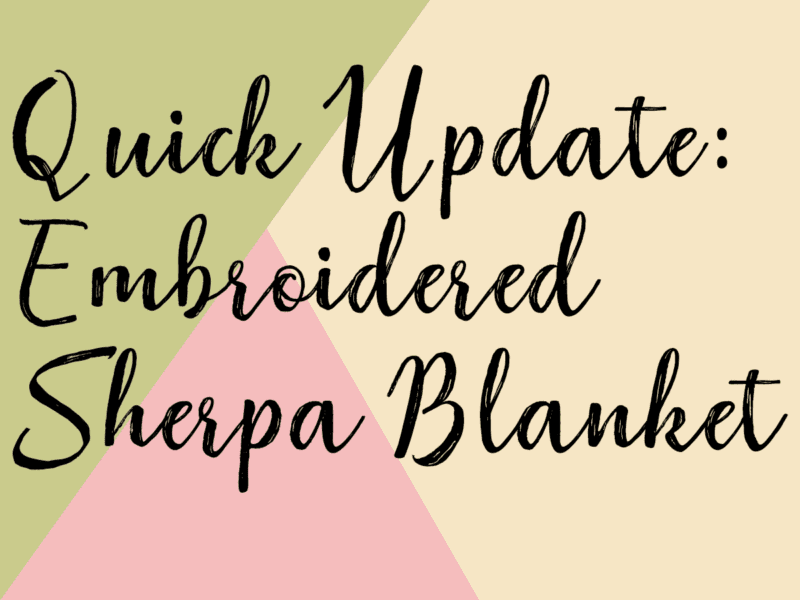Overview
The Delta 18100 athletic fit t-shirt is a less-commonly available option for businesses using a print-on-demand model. Notably, Delta as a brand is not universally offered at POD suppliers. This style offers competitive pricing and a lot of colors but the garment construction and print quality vary from shirt to shirt.
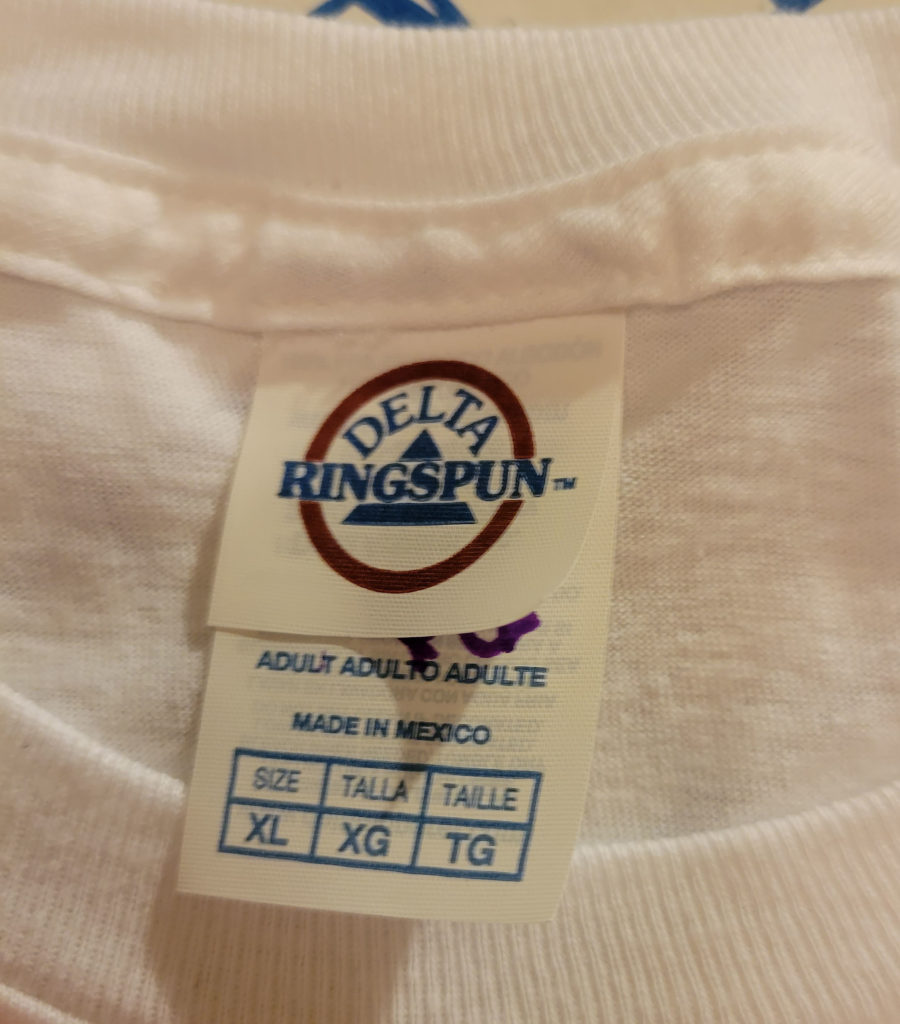
This post is part of a research project into the best print-on-demand t-shirt options. I’ve summarized my findings in a separate post and am also providing more detailed reviews of the individual options.
I’ve sewed and enjoyed a variety of needlework for almost my entire life, having a solid background in textiles and garment construction. I’ve relied on this lifetime of experience as I evaluated each sample.
Methodology
In order to better compare all of the styles, I used the following approach:
- Unisex size XL
- Two colors: 1 black, 1 white (or closest equivalent)
- Same design file. I did have to resize for one or two shirts depending on the vendor, but I was starting with an Illustrator file and so could keep the same resolution.
- Measured 3 points on each shirt upon receipt:
- Center back from base of collar to hem
- Chest width just below the arm hole
- Sleeve length from shoulder seam to hem along the top center
- Washed each shirt twice using the label instructions and then remeasured along the same points.
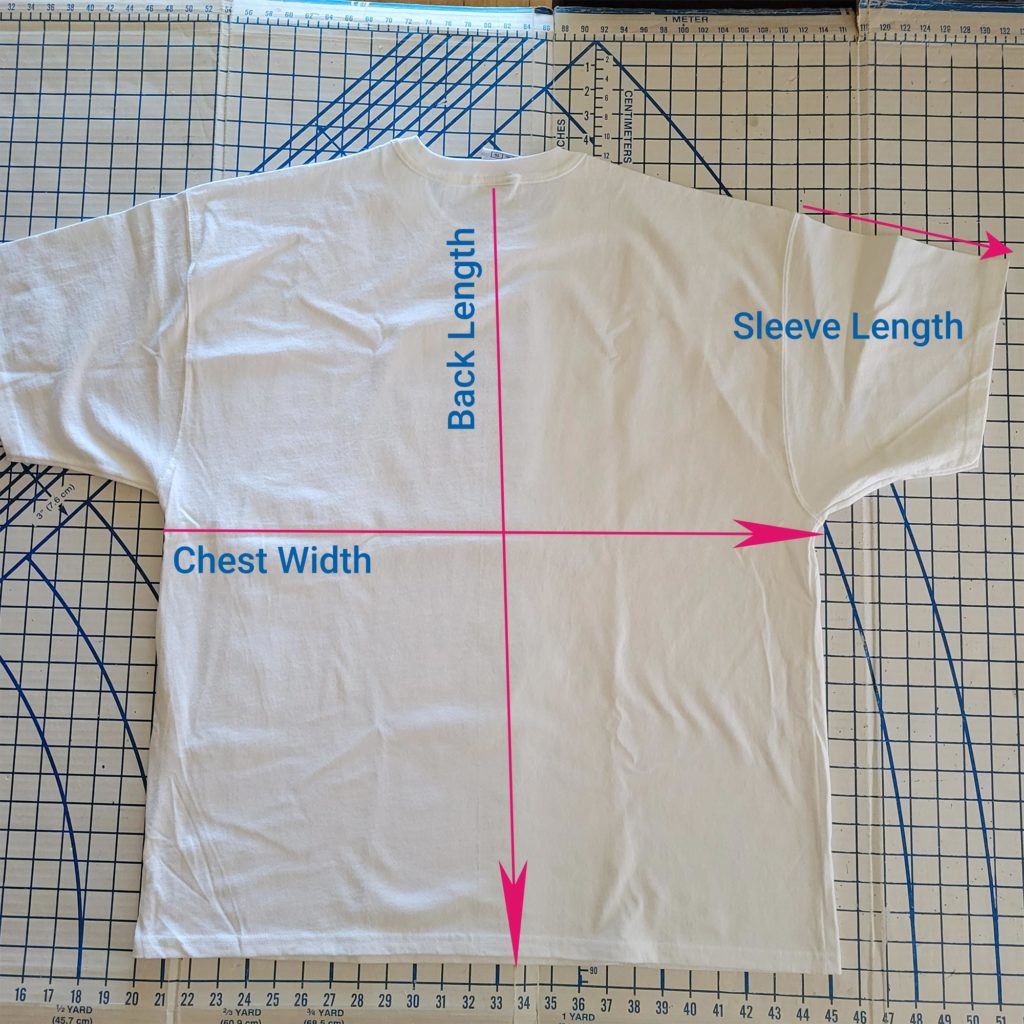
I examined the construction and fabric quality of each sample. The print quality was part of my evaluation, but I considered it a secondary factor for this particular project.
Certain parts of my conclusions – such as about the fabric quality – are a bit subjective. But I’ve tried to balance that out by describing the specific elements that went into my judgment.
Fabric and Construction
Content and Colors
Fiber content varies for the Delta 18100 by color. The particular samples I got are made from 100% cotton.
This is a case where the POD supplier website (Gooten) is not very informative. They simply say “100% pre-shrunk ringspun cotton. Some colors contain polyester.”
So I went to the manufacturer’s site, Delta Apparel. Much to my annoyance, they are the source of the problem: their spec sheet for the tee says exactly the same thing!
But then I noticed some coding on the spec sheet next to the color swatches.
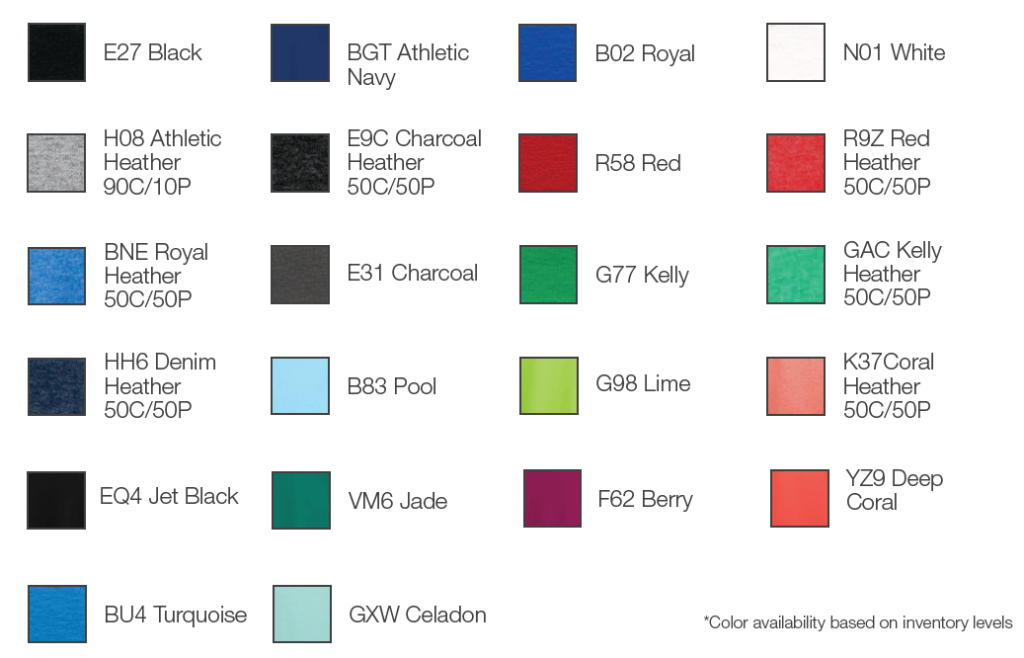
This is obviously fiber content information for some of the swatches! So it looks like all colors are 100% cotton with the following exceptions:
- Athletic Heather (a medium grey): 90% cotton, 10% polyester
- All other heather shades: 50% cotton, 50% polyester
I would consider this a light-to-medium weight t-shirt jersey. It has a moderately soft hand – that was much improved by washing – and smooth surface. According to the manufacturer’s specifications, it’s 4.3 oz. per square yard.
It comes in 22 colors as seen in the above swatch image. Unisex sizing is Small through 3XL.
My white sample is bright white. The black (E27 in the above swatches) is a soft, warm shade that skews slightly toward brown.
Construction
The body construction is the tubular method. With this approach, the fabric manufacturer knits the body fabric in a tube to the right circumference. The garment manufacturer then cuts it to length with no side seams needed. The shoulder seams are sewed with the sleeves and collar band being inserted (curved openings are cut into the tube for them).
As I’ve noted in other t-shirt reviews, while this construction method can save labor costs – 2 fewer seams per garment adds up – it has its problems. The main ones I’ve noted are
- Lack of side seams to use as reference points when printing a design increase the odds it will be crooked.
- Any errors by the manufacturer in properly lining up the fabric grain during construction can become exaggerated resulting in twisting of the garment.
I experienced both of these problems with this set of samples. The off-grain construction didn’t really become apparent until after washing, but it’s obvious that the black one, in particular, is skewed. I’ll discuss it in more detail in the “Print Quality” section below.
Other aspects how these were put together are fine. The shoulder seams and back of the neckline are taped – which means they’re resistant to stretching out of shape. All the hems are neatly finished with double-needle stitched for protection from fraying.
In the end, the construction methods used are a trade off between quality and cost that we’re all familiar with.
Styling
This t-shirt is slightly longer than average but with one of the slimmer fits among those evaluated. It’s marketed at having an athletic fit which seems accurate based on the sample set.
Measurements – Before and After Washing
These shirts have one of the slimmer fits overall within the test group but are some of the longest even after washing.
All measurements in inches.
Before Washing
| Color | Center Back | Chest Width | Sleeve Length |
|---|---|---|---|
| Black | 30.25″ | 22.875″ | 8.625″ |
| White | 30″ | 23″ | 9″ |
After 2nd Wash
| Color | Center Back | Chest Width | Sleeve Length |
|---|---|---|---|
| Black | 28.125″ | 22″ | 8″ |
| White | 28.875″ | 22.5″ | 8.75″ |
Shrinkage After 2 Washes
| Color | Center Back | Chest Width | Sleeve Length |
|---|---|---|---|
| Black | 7% | 3.8% | 7.2% |
| White | 3.8% | 2.2% | 2.8% |
As it common with cotton knits of this type, the shirts shrank more in length than in circumference. Overall, these shirts shrank more than average within the test group.
Print Quality
Color and Design Reproduction
The print quality is…Ok. Before washing I would have considered the result on the black shirt to be better than on the white one. But now that I’ve washed it 2 times I’m seeing some deterioration around the edges and of some finer elements.
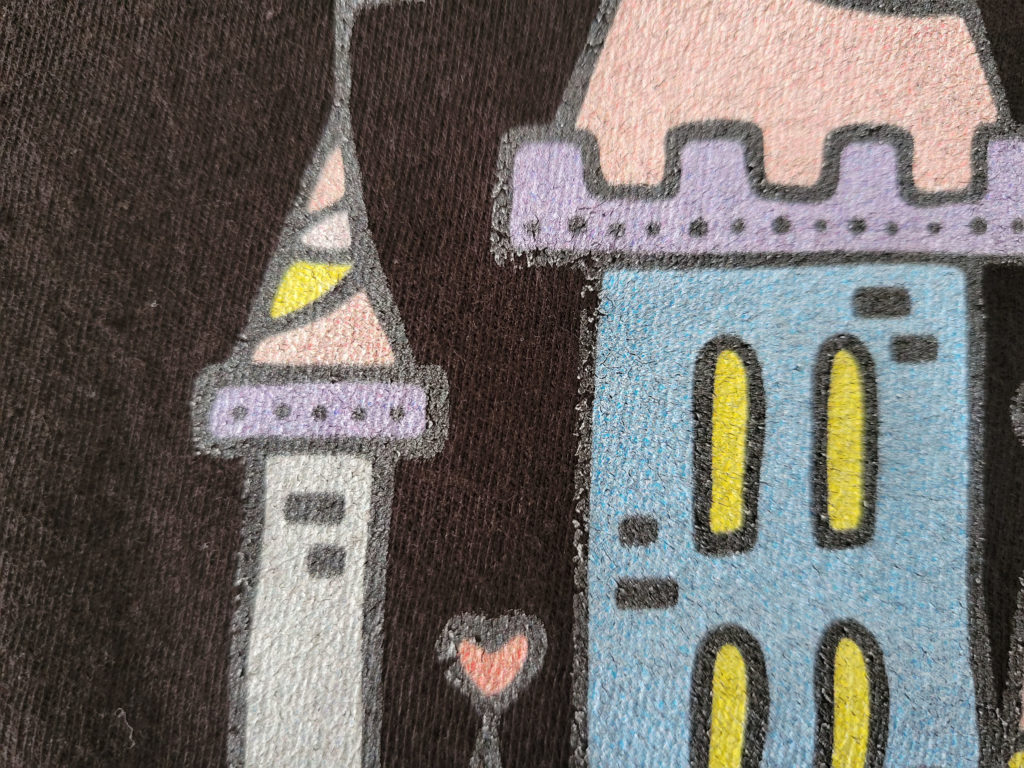
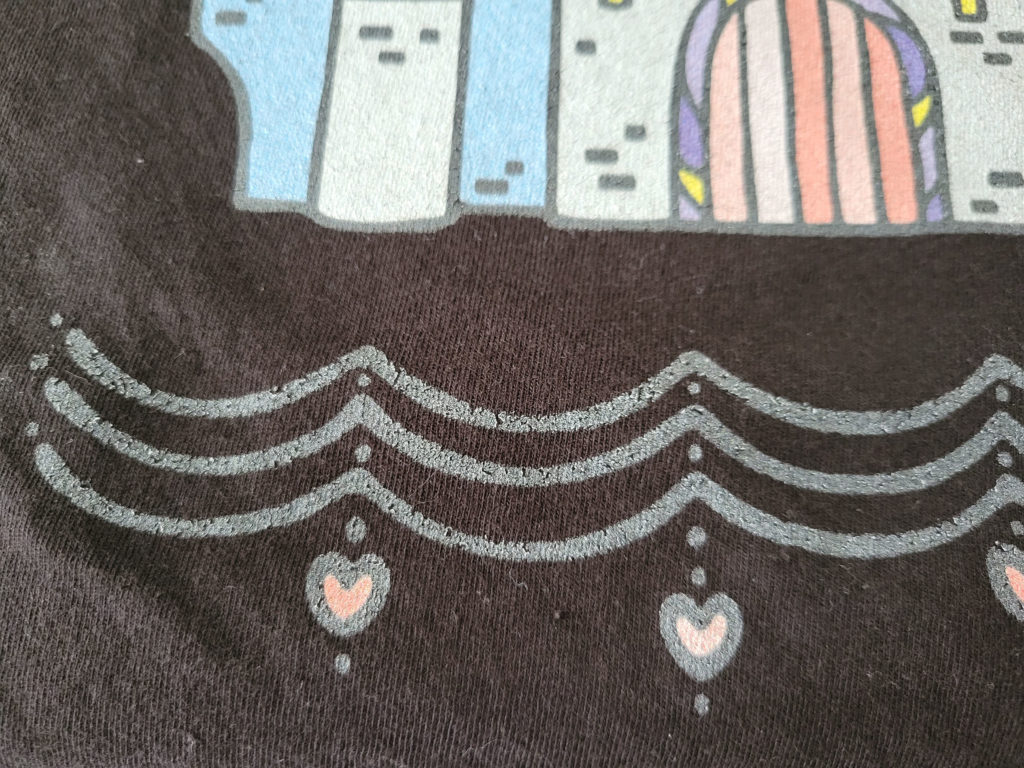
In what is becoming a running theme as I evaluate these shirts, the colors are much lighter on the white shirt than on the black. But it’s proving to be much more durable. So a bit of a tradeoff.
The Crooked Print
But the print jobs are where I noted a couple problems with these shirts. Some are more about the printer and others inherent to the shirt.
My first impression was that the print job on the black shirt was fine: decent quality and it was straight. The placement on the white shirt, however, was noticeably crooked. This is a consistent issue I’ve seen with tubular construction shirts. Unfortunately, I can’t find my photos of the black sample before washing, but you can see the white one below.
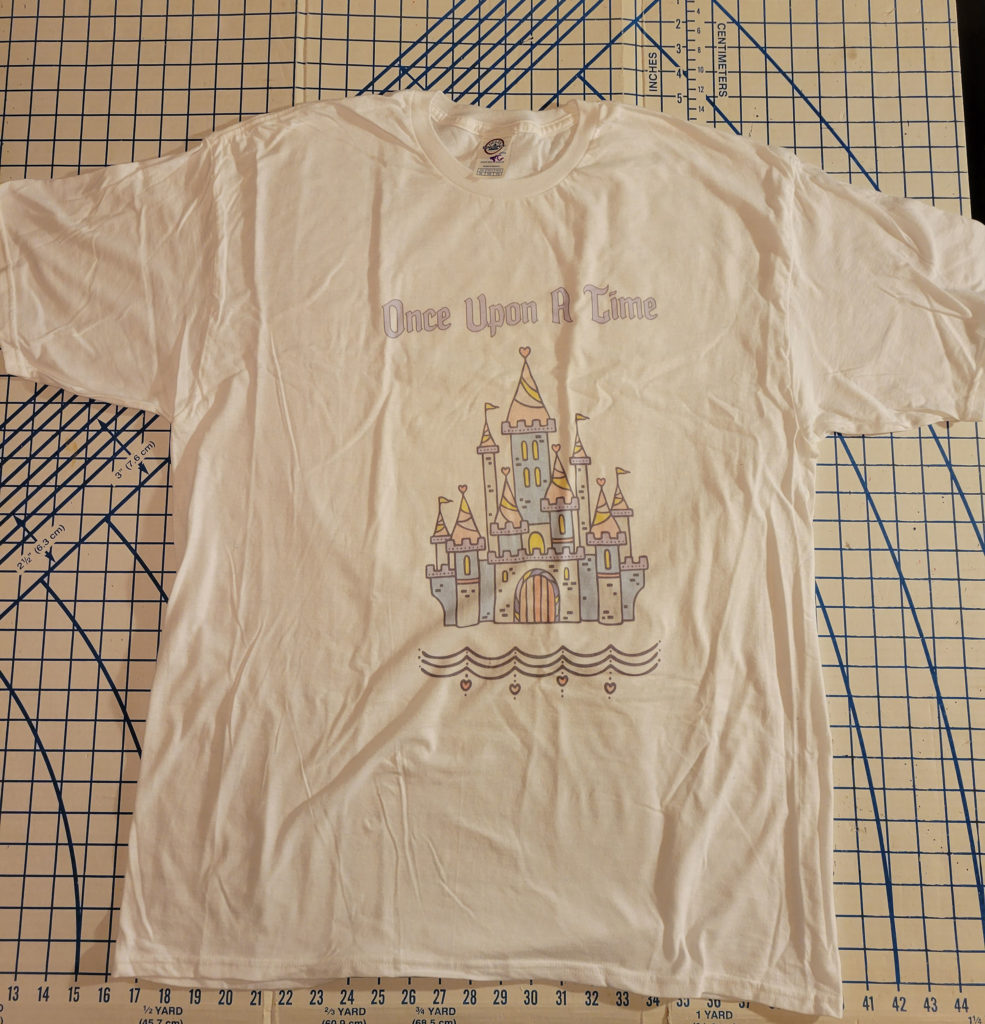
After washing the shirts, things have changed. The design on the black shirt seems fairly straight at the top but is crooked as you go further down. To me this indicates the garment was constructed with the fabric off-grain: after washing and the resulting shrinkage, the body started twisting. And the photo below is after I fussed a bit with the shirt trying to straighten things out.
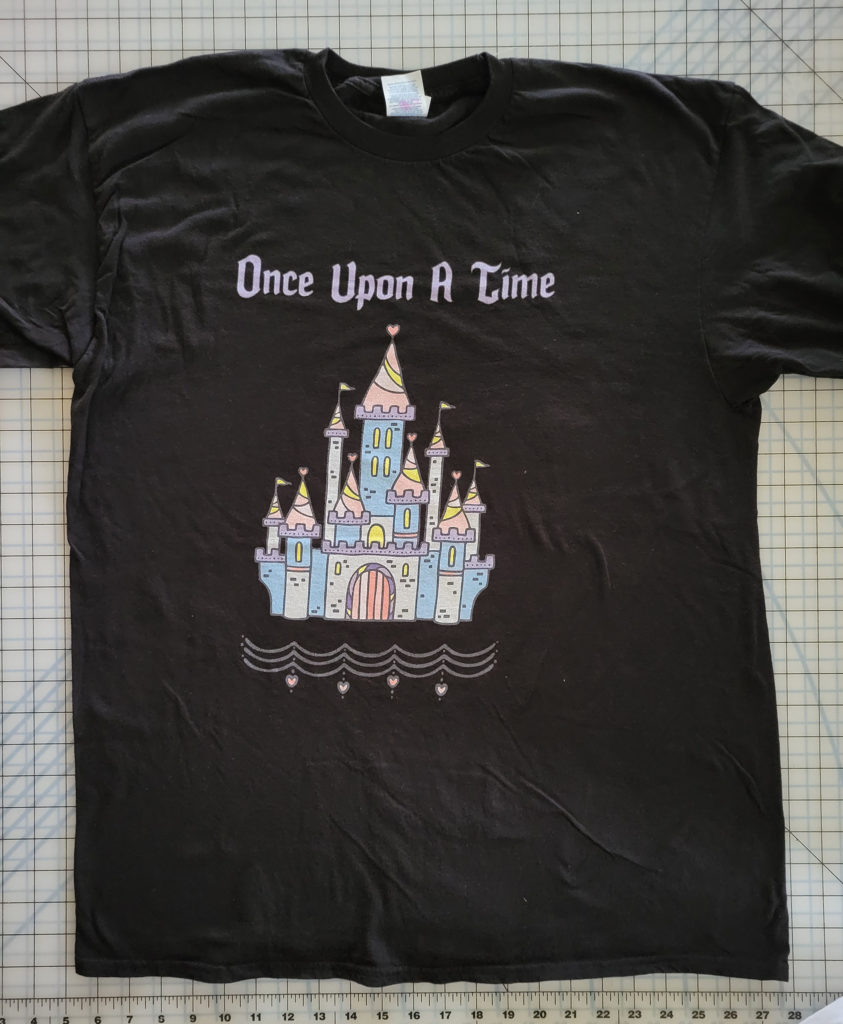
I think the white shirt was put together a bit better because there wasn’t a huge change in how the design is skewed. It’s pretty much as off as it was originally.

Pricing and Suppliers
As of this writing, only Gooten offers this style among the three POD suppliers I’ve used so far for this project.
It’s marketed as a Unisex style, and Gooten places it under that section. The manufacturer simply calls it an “Adult 4.3 oz Athletic Fit Tee.” The unisex sizing ranges from Small to 3XL.
Without any volume or other discounts, the base prices started at $8.40 per shirt (for white; other colors started at $8.90) when checked on October 10, 2021. The 2XL and 3XL sizes cost $2-4 more.
Overall it fell slightly below average among the models I’ve tested in terms of cost.
Conclusion
Overall, given the lack of choice in POD suppliers for this shirt, I would avoid it for now. The shirt itself isn’t too bad considering the price point, but there are too many inconsistencies in print quality to recommend it. You have a number of other better options available to you in the POD space.

